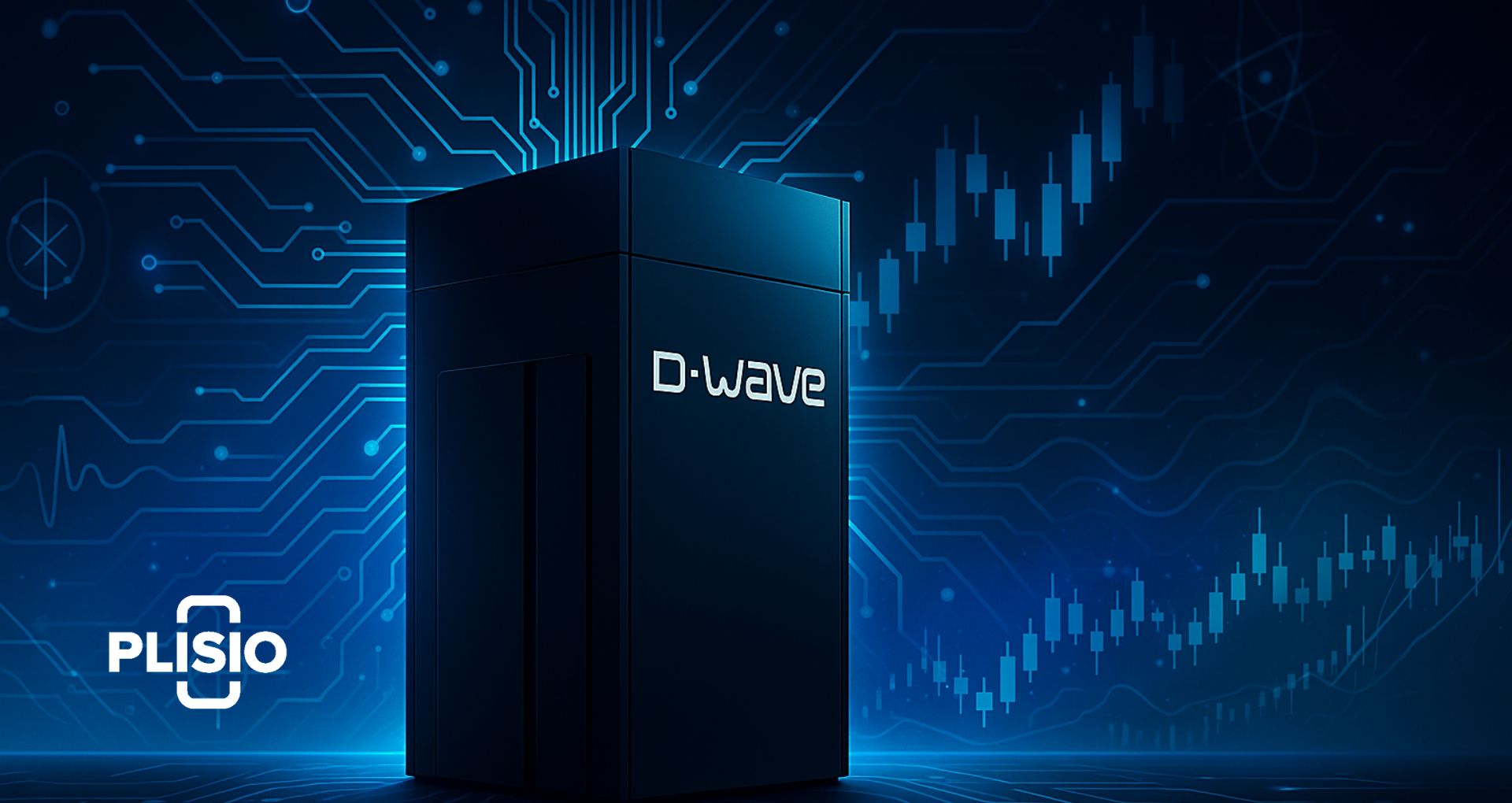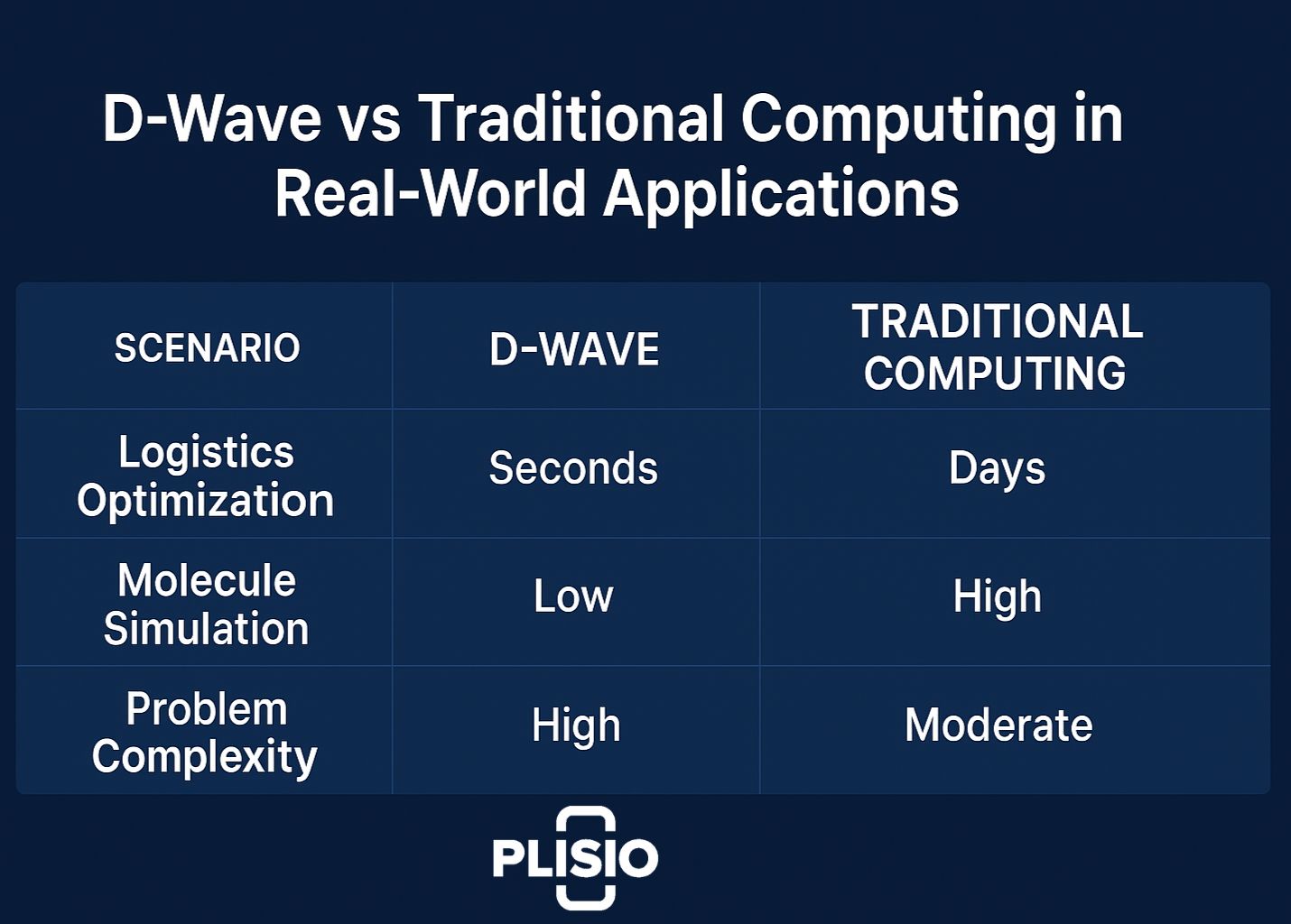QBTS Stock Price Prediction 2025–2030: D-Wave Quantum Inc. Outlook

D-Wave Quantum Inc. (QBTS) is at the crossroads of cutting-edge physics, advanced software engineering, and risky finance. The company is listed on the NYSE and is one of the few pure plays on quantum computing, which is a technology that is often called the next big thing in computing. As investors look for the next big thing, qbts stock has gotten a lot of attention because its price changes a lot, it has big goals, and the future is unclear.
Company Overview: The Quantum Story
The goal of D-Wave Quantum Inc. is to make quantum computing systems useful in business. D-Wave is different from other companies like IonQ and Rigetti Computing that make gate-model quantum processors. Instead, it focuses on quantum annealing, which is a different method that works well for optimization problems. This difference in technology is a big part of D-Wave's identity and the story behind its value.
Advantage2, the company's main platform, is a next-generation annealing system with more than 7,000 qubits and better connectivity. This big jump in capacity lets businesses handle big problems with logistics, AI training, and cybersecurity that regular computers have a hard time with. D-Wave's Leap cloud service lets people all over the world access these systems from afar, so they can try out quantum applications.
D-Wave Quantum Inc. is valuable not only because of its patents and processors, but also because of its partnerships and intellectual momentum. Working with companies in aerospace, defense, and finance shows that more and more institutions are interested in the power of quantum computing. But even with all the technological progress, making money is still hard to come by. This is a reminder that the financial markets often price dreams long before profits.
Financial Overview and Current Price Action
Real-time NYSE data shows that the current price of QBTS is about $29.50 per share as of November 2025. The last closing price was almost the same, showing that there was only a small amount of movement during the day after weeks of volatility. The stock has traded between $0.87 and $46.75 in the past year, which is an amazing range that shows how excited people are about it.

D-Wave's financial fundamentals are still hard:
|
Metric |
Value (approx.) |
Source / Note |
|
Current Price |
$29.50 per share |
Real-time NYSE quote |
|
Last Closing Price |
$29.50 |
Last closing before Nov 9, 2025 |
|
52-week range |
$0.87 – $46.75 |
Historical volatility high |
|
Revenue (TTM) |
~$22.3 million |
Latest D-Wave Quantum Inc. financials |
|
EPS |
-1.10 |
Negative earnings per share (EPS) |
|
Analyst Rating |
Strong Buy |
Consensus rating from analysts |
|
Average Price Target |
~$20.50 |
Analyst price target predictions |
The company still hasn't posted a positive EPS, and it is still losing a lot of money. However, revenue growth has sped up from year to year, going up more than 500% because of more cloud use and system sales. So, the value is based on the potential for growth, not on how much money it makes.
According to brokerage data and market commentary, 10 analysts are currently covering the stock, and their opinions are mixed. Some still give it a Strong Buy rating, but others say that D-Wave's market cap is growing faster than its real progress. Still, bullish investors say that the company's early-mover advantage gives it a strong position in a future trillion-dollar industry.
Analyst Forecasts and Price Targets
It is very hard to predict the price of a quantum stock like QBTS, but analysts still publish targets to help people find their way. The average price target is a moderate drop from the current price of about $20.50, but this varies from company to company. The analyst price range goes from a low of $10 to a high of $40. In a bullish 2030 scenario, one analyst's price target is above $50.
The 12-month price forecast says the stock will stay volatile, going up and down between $18 and $35 as investor sentiment and technical signals change. Forecast data show that people are still guessing about contract wins, new partnerships, and technological breakthroughs. D-Wave's financial forecast says that its revenue will grow slowly until 2026, but it doesn't expect to make a profit.
The table below shows the short- and long-term predictions in a nutshell:
|
Period |
Forecast Range |
Key Factors |
Analyst Consensus |
|
2025 (Short-Term) |
$18 – $35 |
EPS losses, speculative trading, sentiment |
Neutral to Bearish |
|
2026 |
$20 – $40 |
Expanding adoption, cloud revenue |
Cautiously Bullish |
|
2030 |
$40 – $60+ |
Maturity of quantum industry |
Bullish |
The qbts forecast fits with other models that predict stock prices based on market cycles and the spread of new technologies. In the past, early-stage innovation stocks have followed paths that aren't straight: they have speculative booms, sharp corrections, and long periods of consolidation before they can grow steadily.
Technical Analysis and Market Signals
From a technical analysis point of view, QBTS is very volatile, which is common for small-cap stocks that are new to the market. The moving average over the last 14 days has recently leveled off, which could mean that the price is stabilizing after going up a lot. It looks like support levels are around $18 to $20, and resistance levels are around $46. The RSI has been between 55 and 75, which means that the market has been slightly overbought during recent rallies.
Traders who are watching the price changes think that the current pattern could be the start of a symmetrical triangle. If the price breaks above $35, it could mean that bullish momentum is coming back. If it falls below $18, it could mean that people are starting to sell and the mood shifts to bearish. In the past, these kinds of patterns have come before either huge gains or big losses, especially in quantum stocks that aren't traded much.
Main Technical Highlights:
- RSI is between 55 and 75, which means the momentum is mixed.
- Short-term moving averages show that things are settling down.
- Support levels are close to $18, and resistance levels are close to $46.
- When volume drops below the 14-day trendline, it sends out sell signals.
- Price changes are still more frequent than in the rest of the sector.
Analysts are still divided on QBTS: some say it's a good stock to buy when it drops, while others say it should be sold quickly if the company can't keep up its revenue growth. The difference shows how speculative this sector is.
Comparative Analysis: Quantum Peers and Market Benchmark
The quantum computing field is still small, but there is a lot of competition. The three publicly traded quantum companies are IonQ, Rigetti Computing, and D-Wave. D-Wave's annealing method sets it apart from the rest, while IonQ is the leader in the gate-model space and is often used as a standard by investors to judge the potential of quantum technology.
IonQ's market cap is over $3 billion, but D-Wave's valuation is still below that, which shows both doubt and opportunity. Analysts argue that D-Wave’s approach may yield earlier commercial applications, though it risks obsolescence if universal quantum computing scales faster than expected.
This divide is shown by the trends in the recommendations of brokers. Companies that care more about short-term profits like IonQ, while those that bet on improving industry performance think D-Wave is undervalued. But both sides agree that the whole quantum computing field will take a long time to develop.
Financial Forecast and Long-Term Prediction
Analysts' stock predictions for 2026 and beyond depend on D-Wave's ability to turn its technology leadership into steady income. The financial forecast says that by 2030, EPS will be slightly positive, as long as costs are kept in check and new customers are gained steadily.
In the best-case scenarios, the qbts price could go over $50 per share by 2030. A neutral path keeps the price around $30, but a negative forecast—because of problems with competition or funding—could send it below $15. The highest and lowest estimates from analysts show how risky and rewarding it is to invest in this quantum stock.
Some forecast data models even guess what the value might be at different adoption rates. If quantum computing takes 1% of all business IT spending by 2030, D-Wave could make more than $500 million a year. This would be enough to justify a tenfold increase in its value. But this scenario needs to be carried out perfectly and more people need to start using it.
Analyst Ratings and Consensus Outlook
Current analyst ratings put QBTS in the Strong Buy category, based on hopes for technological leadership and strategic growth. The consensus rating shows that people believe in the company's long-term vision, but short-term investors are still cautious because the company hasn't made any money yet.
The average price target is still around $20.50, which means that there is a moderate chance of a drop. But the analyst price target predictions are very different from each other, which shows that the market is not sure what will happen. Some experts think there will be a correction in the near future, while others think the stock will keep going up as the company makes money from its IP portfolio.

Recent reports say that D-Wave Quantum Inc.'s move into government contracts could help keep its revenue steady. The company lowers its risk by balancing hardware development with quantum software services. If these efforts work, analysts think that people's feelings will improve and they will have easier access to money.
Market Sentiment and Trading Behavior
QBTS has been as volatile as the rest of the tech market in the last three months. Retail investors have made both upward and downward moves bigger, while institutional investors have slowly added to their holdings. This fight leads to big spreads during the day and a lot of short interest.
Traders watch how prices move in relation to the moving average and use these levels to find points to buy and sell. Resistance levels above $45 show where the price might break out, and support levels near $18 show where the price might stop falling. The pattern makes it look like the bulls and bears are playing a waiting game.
The stock quote is still one of the most searched for among new tech stocks. Sentiment analysis on social media shows that people are generally optimistic, but this is often not based on facts, which is a sign of early-stage innovation cycles.
Things to Watch for Investors:
- Check your quarterly earnings to see how well you're diversifying your income.
- Keep an eye on insider trading to see if management is confident.
- Look at D-Wave's growth numbers next to those of IonQ and Rigetti Computing.
- Look at the big picture factors that affect tech plays that are sensitive to liquidity.
- Keep an eye on changes in analyst ratings or brokerage coverage.
Forecasting Beyond 2026: The Road to 2030
If D-Wave keeps making money and stops losing money, it could go from being a risky investment to a real tech growth story by 2026. Analysts think that better finances, steady cloud revenue, and industrial clients may improve how the market sees the company.
The stock should do well in places that encourage new ideas, but it could be hurt by big changes in the economy. If inflation goes down and tech stocks go back up, D-Wave might move back up to the top of its price target range.
The company's future will probably depend on how quickly people in the logistics, finance, and machine learning fields adopt its products and services by 2030. Execution speed makes the difference between a strong buy and a strong sell. Quantum computing will always be one of the most exciting and dangerous areas of modern finance.
Conclusion: Buy or Sell?
The qbts stock price prediction combines two stories that don't agree with each other: one about scientific promise and the other about financial uncertainty. The average price target and the price targets set by analysts suggest that short-term investors should be careful, but long-term investors should be hopeful. The prediction for the stock price still depends on advances in quantum computing technology and its ability to gain traction in the market.
In the end, the story of D-Wave Quantum Inc. is a lesson in patience. The financial markets like new ideas, but they don't like when people go too far. Investors looking for high-reward opportunities may see QBTS as a speculative stock to buy during corrections, while traders who don't want to take risks may stay away until earnings become clearer.
The qbts stock price will be affected by the battle between hope and reality over the next five years. D-Wave has already become one of the most interesting case studies in modern finance, whether it becomes a key part of future computing or a warning story in speculative investing.



